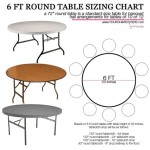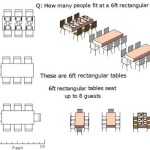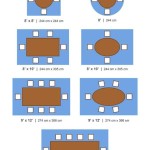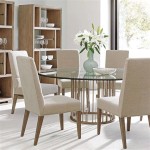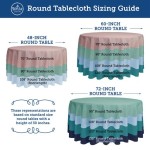Can I Use Placemats With a Tablecloth?
The question of whether to use placemats with a tablecloth often arises when setting a formal or even a casual table. The answer, in short, is yes. Combining placemats and tablecloths is perfectly acceptable and can even enhance the dining experience. This practice offers both practical benefits and aesthetic advantages, allowing for a greater degree of customization and personalization in table settings.
Practical Benefits of Using Placemats with a Tablecloth
Placemats add a layer of protection to the tablecloth, shielding it from spills, crumbs, and heat damage from hot dishes. This added protection prolongs the lifespan of the tablecloth, particularly delicate or heirloom pieces. Further, placemats can also help to dampen noise from plates and cutlery against the table surface, contributing to a more pleasant dining experience.
Aesthetic Advantages of Using Placemats with a Tablecloth
Placemats can introduce a pop of color, texture, and pattern, adding visual interest to the table setting. They can complement or contrast the tablecloth, creating a layered and sophisticated look. Using placemats also helps to define individual place settings, providing a sense of order and structure to the table arrangement. This structured placement can enhance the overall presentation and add a touch of formality to the dining experience.
Choosing the Right Placemats for Your Tablecloth
Selecting the right placemats involves considering the material, shape, and size of both the placemat and the tablecloth. For formal occasions, fabric placemats, such as linen or silk, often complement a damask or linen tablecloth. For casual settings, woven or vinyl placemats can pair well with a cotton or polyester tablecloth. The shape of the placemat, whether round, square, or rectangular, should complement the shape of the table and the overall table setting. The size should be large enough to accommodate the dinnerware but not so large that it overwhelms the place setting or overlaps with adjacent placemats. A good rule of thumb is to leave a few inches of space between the edge of the placemat and the edge of the table.
Coordinating Placemats and Tablecloths
Creating a cohesive table setting requires careful coordination of the placemats and tablecloth. Consider the color palette, patterns, and textures. A monochromatic scheme can create a sense of elegance, while contrasting colors can add a vibrant touch. If the tablecloth has a bold pattern, opt for simpler placemats to avoid a cluttered look. Conversely, if the tablecloth is plain, patterned placemats can introduce visual interest. The textures of the tablecloth and placemats should also be considered. A smooth linen tablecloth might pair well with textured woven placemats, while a lace tablecloth might complement smooth satin or silk placemats.
Different Occasions, Different Combinations
The occasion dictates the appropriate combination of placemats and tablecloths. For formal dinners, a crisp white linen tablecloth paired with elegant linen or silk placemats creates a classic and sophisticated ambiance. For casual gatherings, a cotton or linen tablecloth with woven or vinyl placemats provides a relaxed yet stylish setting. For holidays, themed placemats can add a festive touch to the table. For outdoor events, durable and easy-to-clean placemats are preferable.
Caring for Placemats and Tablecloths
Proper care ensures the longevity of both placemats and tablecloths. Fabric placemats and tablecloths should be laundered according to the manufacturer's instructions. Vinyl or other wipeable placemats can be cleaned with a damp cloth. Promptly addressing spills and stains prevents them from setting and becoming permanent. Storing tablecloths and placemats properly, folded neatly and away from direct sunlight, helps to maintain their quality and appearance. Ironing, if necessary, should be done according to the fabric type to avoid damage.
Setting the Table with Placemats and a Tablecloth
When setting the table with both a tablecloth and placemats, the placemat should be placed approximately one inch from the edge of the table. The dinner plate rests in the center of the placemat. Cutlery is placed to the sides of the plate, with the forks on the left and knives and spoons on the right. The water glass is positioned above the knife, and the wine glass, if used, is placed to the right of the water glass. The napkin can be placed either on the plate or to the left of the forks.
Beyond the Basics: Adding Decorative Elements
While placemats and tablecloths form the foundation of a well-dressed table, additional decorative elements can further enhance the setting. Centerpieces, such as flowers, candles, or seasonal decorations, can add a touch of elegance and personality. Napkin rings, chargers, and decorative glassware can further elevate the overall aesthetic. However, it is important to avoid overcrowding the table. A balanced and harmonious arrangement is key to creating a visually appealing and enjoyable dining experience.

How To Set The Table With Placemats

How To Use Placemats Ultimate Style Guide French Affair
The Great Debate Placemats Or Tablecloths Which Are Better Lc Studios

How To Use Placemats Ultimate Style Guide French Affair

How To Buy The Right Tablecloth Or Placemats For Every Table And Occasion Cbc Life

20 40 60 Etiquette Setting The Table Tone For Your Dinner Party

How To Match Tablecloth Napkins Runners And Placemats 4 Styles For All Occasions

Should You Use Placemats With A Tablecloth Combinations Positioning Tips Tablecoversnow Com

Table Runners And Placemats Guide Crate Barrel

How To Set The Table With Placemats
Related Posts

